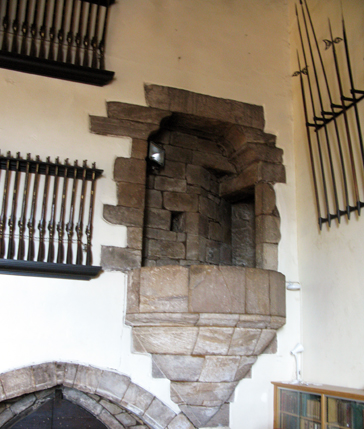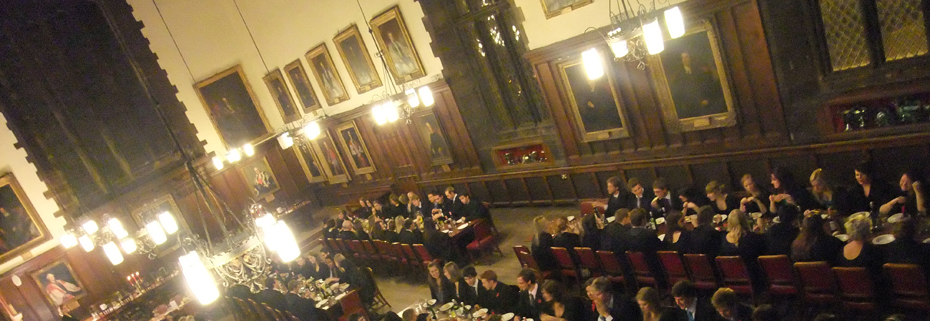
The two trumpeters' galleries were thought to have been put in in the 14th century, during the Bishopric of Hatfield, who was known to have a great sense of self-worth. Trumpeters would signal the bishop's arrival into the hall at important events, and during banquets, played a musical interlude between courses.
© Jeffrey Veitch
The Great Hall was once used to wine-and-dine kings, clergy and noblemen – but what is its function today?
Changing dimensions
In the 13th century, under Bishop Bek (1284-1311), the Norman Castle’s hall was replaced by a much grander, more palatial structure: the Great Hall.
This was further embellished by Bishop Hatfield (1345-81) who lengthened the hall southwards, placed a throne at each end, and renewed the roof and most of the windows.
The trumpeters’ galleries, still to be seen today, could also be Hatfield’s work.
It is clear that Hatfield, who had also expressly constructed a cathedra (Bishop’s Seat) for himself in the Cathedral that was higher than the Pope’s in Rome, was keen to display his power through grandeur and ceremony.
In the 15th century, under Bishop Fox, the Great Hall was once again made shorter, converting it into its present form. Today, it is over 30 metres long and almost 14 metres high. At some point in the seventeenth century it was further shortened by the creation of two large state rooms, one above the other, at the north end, but these were removed in the nineteenth century.
A Nineteenth Century Room
Much of the appearance of the Great Hall is due to remodelling in the 19th century. The large north window, the stained glass of which includes the arms of various figures connected with the Bishopric and with the University in its early days, was inserted in 1882 to commemorate the University's fiftieth anniversary, and the oak panelling and entrance screen were added shortly after this. The tall windows on the east and west walls also received their present form during the course of the nineteenth century. By that time, the Castle had no defensive role, and therefore enlarging the windows was not a problem.
The Great Hall is now used by students and university staff who eat there three times a day, with "formal hall" twice weekly.

Detail of the stained glass window put into the hall in the 1880s, showing the coats of arms of some key Durham Bishops. The blue shield with the yellow 'knot' is that of John Cosin, who inherited the Bishopric after the Civil War in the 17th century, and was a keen patron of architecture. The red shield with the two sickles above it is that of William Van Mildert, the last Prince Bishop, who established Durham University in 1832 and subsequently gave the Castle to the new institution.
© Jeffrey Veitch

